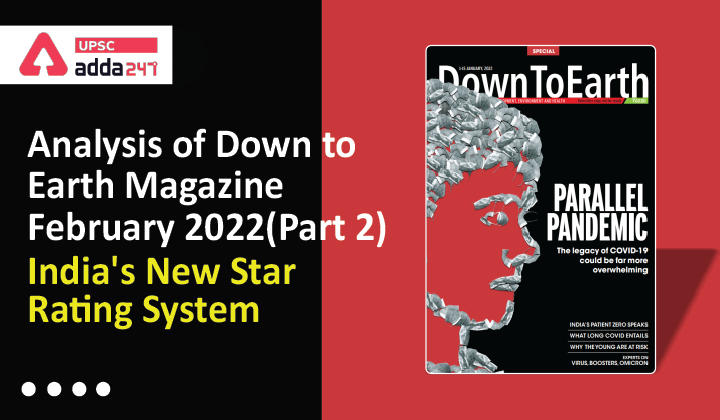Table of Contents
Analysis of Down To Earth Magazine: India’s New Star Rating System
Relevance
”GS 3: Environmental Impact Assessment (EIA)”
Introduction
- Recently, the Union Ministry of Environment, Forests and Climate Change has decided to rank states on the basis of efficiency and timelines in the grant of environmental clearances.
- According to the star rating system, the State Environment Impact Assessment Authority (SEIAA) which clears projects in the shortest period of time, has a high rate of clearance, and seeks fewer “essential details” will be ranked the highest.
What is the star rating system?
- The ranking system is based on the provisions of the EIA (Environment Impact Assessment) Notification 2006 and various guidelines issued by the ministry from time to time, which are designed to encourage the SEIAAs to increase their efficiency in decision-making strictly as per provisions of the EIA Notification 2006 without diluting any regulatory safeguards.
- Under the proposed changes, SEIAAs will be ranked for the average time taken to clear proposals.
- If agencies, on average, clear proposals within 80 days, they will be awarded two marks. If they take over 105 days, they are awarded one mark, if they take 105-120 days, the state authority will be awarded 0.5 mark and if they take more than 120 days, they will get zero.
- However, the agencies will not be receiving any negative marks no matter the time taken.
- The agencies will also not count the time taken after clarifications regarding the proposal have been sought from the respective parties.
- Apart from the time taken, agencies will be marked on six other criteria, including the number of site visits, and the percentage of EC proposals disposed of within six months.
- The score will be compiled and a rating out of five stars, given.
About SEIAAs
- The SEIAAs are responsible for providing environmental clearance for a bulk of the infrastructure, developmental and industrial projects.
- Their main purpose is to assess the impact of the proposed project on the environment and people, and to try and minimise this impact.
Arguments in Favour
- The government says that this system will incentivise state agencies to process environmental clearances for projects in a fast and efficient manner without diluting any safeguards.
- This is intended as a mode of recognition and encouragement as well as for promoting improvements where needed.
- Star rating has been adopted to incentivise self-environmental compliances.
What are the drawbacks?
- Critics and environmentalists say that the pressure on state agencies for granting clearances faster will lead to hasty actions and without proper review.
- These changes along with the slew of legal amendments that the government has introduced to environmental laws over the past year have threatened to dilute India’s already fragile environmental protections.
- Easier compliance requirements and faster processing of proposals can create a situation where projects can do considerable harm to the environment, say, critics.
- It creates a situation where you are not providing the time needed to make these decisions carefully.
- It also creates artificial competition between states, which may result in industries locating in states that offer environmental clearance quicker.
- According to critics, this pressure of speed, efficiency and incentivisation is going to skew environmental governance and make it pro-business.



 TSPSC Group 1 Question Paper 2024, Downl...
TSPSC Group 1 Question Paper 2024, Downl...
 TSPSC Group 1 Answer key 2024 Out, Downl...
TSPSC Group 1 Answer key 2024 Out, Downl...
 UPSC Prelims 2024 Question Paper, Downlo...
UPSC Prelims 2024 Question Paper, Downlo...
